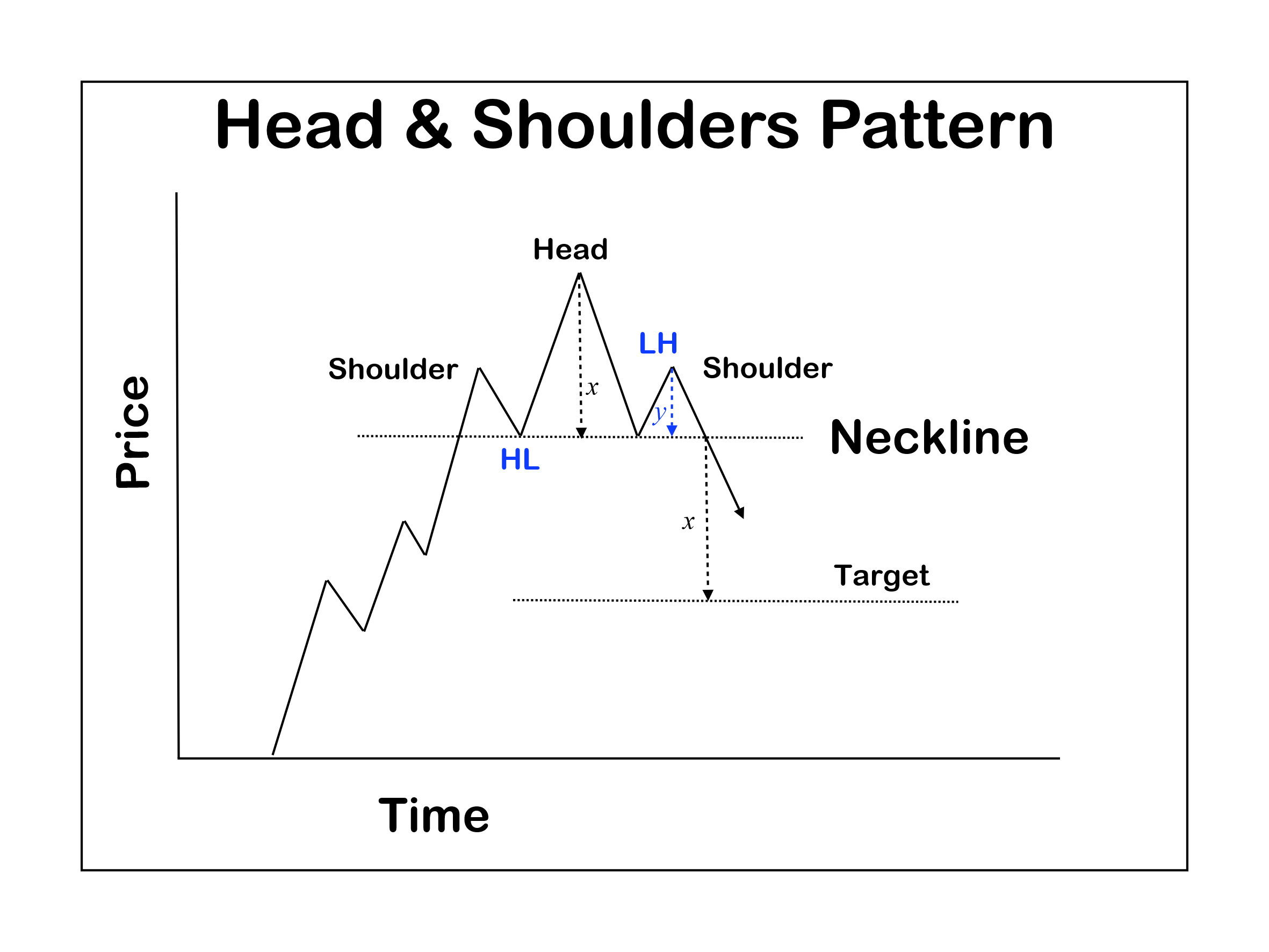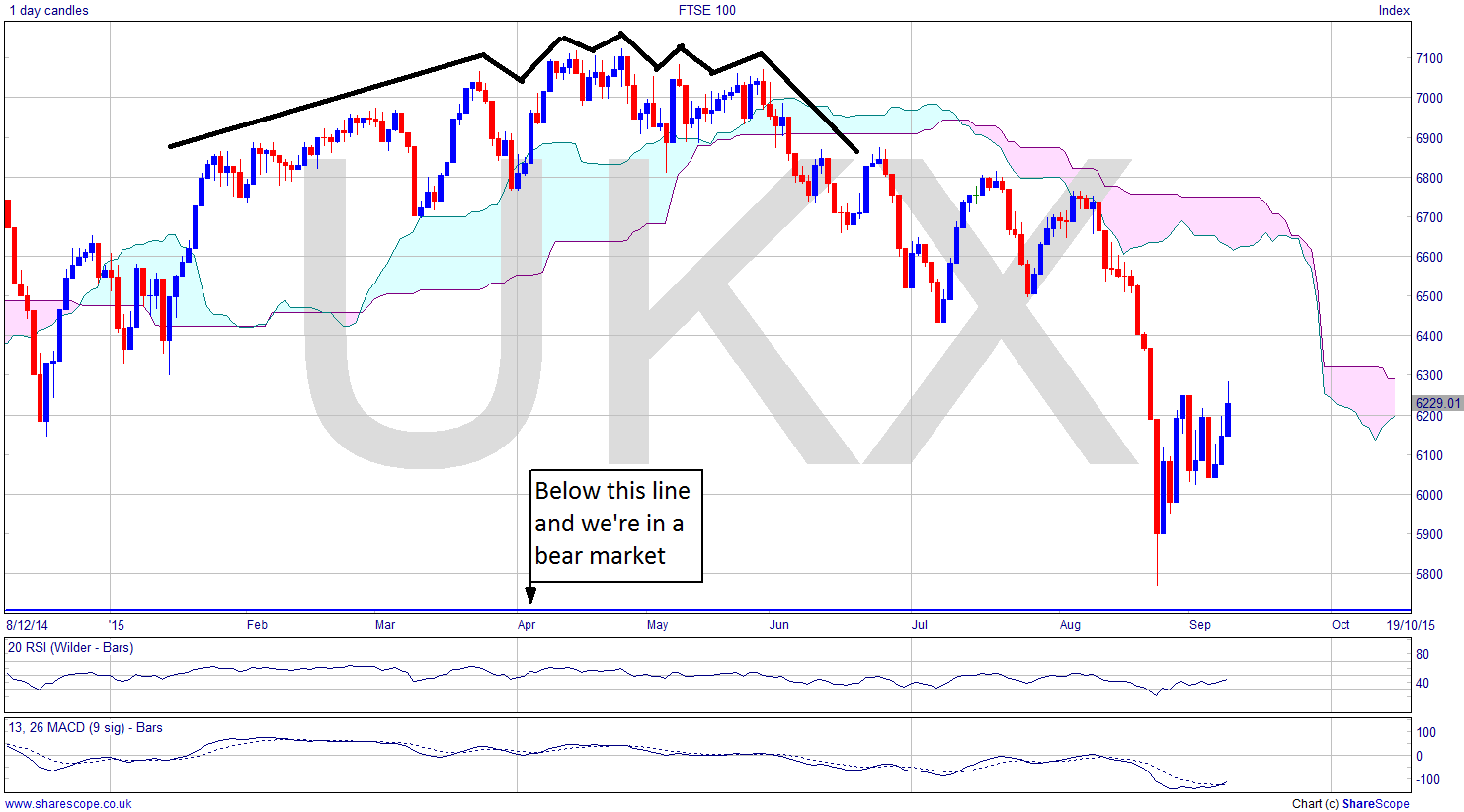Head & Shoulders Reversals – Necklines Are For P*sSIES!

As regular readers of my articles will know, I believe the UK generally has highly unsophisticated private investors. I would expect a majority of people who have tried spread betting did no study whatsoever, and thought they could just wade in and somehow, by osmosis presumably, they’d be really good at it. Sticking your finger in the air is a good idea if you want to know which way the wind’s blowing, but not to decide whether to buy or sell an investment.
Those that have been on training courses are often attracted to the two most visual chart patterns: the Head and Shoulders and the Cup and Handle. Chart patterns are taught and understood in an entirely superficial way, without understanding the real mechanics behind them. I’ve never used Cup and Handle. Look more closely: it’s a significant Higher Low after a significant bottom. A significant pattern doesn’t have to look like something from an ABC book to be valid. I always thought that pattern dubious, and likely to make you miss others because they don’t look quite right.
The Head & Shoulders is slightly different, although people do debate endlessly about where neck lines are, and “that looks like a shoulder”, and so on. Ok let’s examine the basics as they are taught.

A Head and Shoulders is a reversal pattern, and in the example I’ve shown the conventional view in black, and my notations in blue. The idea is that you wait for the pattern to complete and go short when it breaks the neckline after the right shoulder. The distance (x) from the top of the ‘head’ to the neckline gives you your price target beneath the neckline. All fine and dandy, and looks so simple in a seminar. In reality it is unsophisticated. It’s important to understand what is causing any phenomenon in trading to make the best use of it.
Let’s say we’re in a Bull Market coming into the H+S. Each pull back will be seen as an opportunity to get in at a perceived discount, i.e. a past price. At some point the market runs out of steam, overheats or participants start profit-taking and the price falls. Incidentally, once the public participation kicks in professional investors are usually already liquidating: they sell into public demand. At the neckline low, immediately after the head, some will buy in as it’s still perceived as a discount. However there are those who bought higher, now hoping to get their money back, and will sell into the rally to the right shoulder, causing it to fall and as it goes down more and more people are panic selling or profit taking. It’s a downward spiral. It works precisely because that right shoulder, or more simply Lower High, defines the reversal.
I like to get into these trades early. Short at the right shoulder, with a target distance (y) to the neckline, which you can far more reasonably expect if the fall from the head was to the same sort of level as the low before it (i.e. both on the notional neckline). This gives you breathing space if it doesn’t fall through the neckline, but instead bounces on it. You should be able to get out for a break-even at worst. If it does work, then while everyone else is scrambling to get in, you’re home and dry with a risk free trade letting them do all the work.
So a Head and Shoulders is just a basic reversal pattern based on Dow Theory, which is why it doesn’t matter how symmetrical the pieces are, or if there are two shoulders on one side, because it’s the psychology of the market participants that makes it work, and that’s just based on the price levels over a reasonable time frame.
Examples do exist in reverse, i.e. as a bottom reversal which most people call an Upside-down Head & Shoulders, but I prefer to antagonise by calling a ‘Cock and Balls’ reversal. The psychology is reversed and slightly different because it’s a different decision whether to exit a trade than whether to participate, since those in the market have already committed.

A H+S type reversal happened on the FTSE recently, as you can see, with some quite spectacular results! It’s messy (two heads for a start) but that doesn’t matter. It’s just a reversal pattern not a picture portrait. And where’s the neckline? Who cares, pick a shoulder and forget the neckline, it would be around 500 points below, and that’s a third of the move you’re missing.
Comments (0)